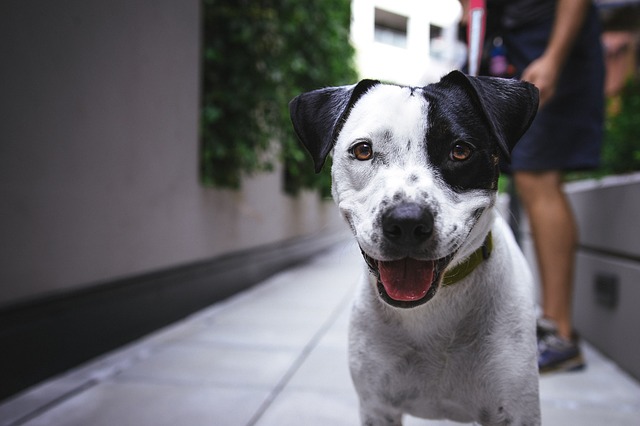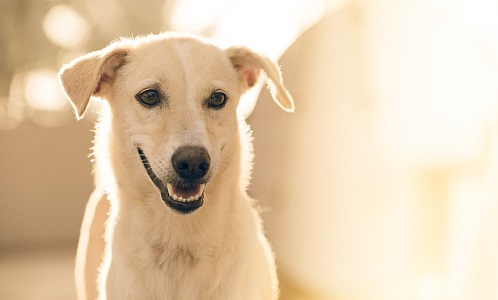Being a pet owner comes with a lot of responsibility. It’s almost like having a child, only your child is covered in fur and has four legs. Just like children, dogs need love and care.
This means making sure their medical needs are met so that they can live a long, healthy, happy life. However, just like with children, the medical costs for a dog can vary widely. They will usually vary based on your dog’s breed, his age and personality, any pre-existing conditions, and his medical history.
While your dog’s healthcare may not always require surgery, the truth is that surgery is very common, especially in emergency situations, and as a responsible pet owner, you want to be prepared and not get blindsided down the road with a hefty vet bill.
Preventative care can be a great way to reduce your dog’s risks of developing health conditions that may require surgical intervention, so it’s important to take your dog’s health and wellness seriously right out of the gate. Obviously, it is much more difficult to plan for emergency situations and unexpected health problems, but it is still possible.
Most Common Reasons for Dog Surgery
 One of the most common reasons for dog surgery is due to a dog’s natural inclination to get into things they shouldn’t. When something gets lodged in a dog’s body, it can get stuck just about anywhere, including the stomach, the colon, the small intestine, the esophagus, or the mouth.
One of the most common reasons for dog surgery is due to a dog’s natural inclination to get into things they shouldn’t. When something gets lodged in a dog’s body, it can get stuck just about anywhere, including the stomach, the colon, the small intestine, the esophagus, or the mouth.
Dogs are very curious creatures by nature and when they get into things they shouldn’t, they may end up eating whatever interesting thing they found. Unfortunately, this can sometimes cause problems because the object isn’t easily digested, or the object gets stuck. This is called a foreign body, and in most cases, surgical intervention becomes necessary in order to remove it.
One thing to note is if the object is considered a linear foreign body surgery, the cost is slightly less than half the cost for a septic foreign body surgery, which usually occurs when there is leakage from the intestine. Just for the surgery needed to remove that foreign body from your dog, you could be looking at anywhere from several hundred dollars in medical fees, all the way up to several thousand dollars.
Types of Foreign Body’s Often Requiring Surgical Removal
Dogs can ingest just about anything (and often do). They can ingest things like hair ties, a piece of floss, a chicken bone, pieces of a ball, cords and strings, socks, stuffed animals, trash, squeaky toys, and just about anything else you can think of.
You may not always know when your little explorer got into something either, because they can find that tasty new morsel and swallow it fast. It’s gone down the pipes before you even realize they’ve ingested anything. When this happens, and these foreign bodies are introduced to their system, they can have a problem moving through the intestinal tract. Thus, surgery is often the only recourse to remove it.
Common Types of Dog Surgeries
Other types of dog surgeries run the gamut, but four of the most common are spaying or neutering a dog, hip dysplasia surgery, cataract surgery, and a gastropexy.
Spay or Neuter Surgery
Spaying or neutering a pet is the surgical removal of all or part of their reproductive organs. The cost for this type of surgery depends on the dog’s age and weight. You can reasonably expect to pay anywhere from $150 to $250 or more depending, on the facility. There are also low-cost clinics that offer these services at discounted rates where you could possibly pay much less.
Hip Dysplasia Surgery
Hip dysplasia in dogs is a common surgery because of the degenerative joint disease older dogs are often plagued with. Sadly, if hip dysplasia isn’t treated it can deteriorate so much that your dog may not be able to walk. When that happens, your dog might have to have surgery.
Cataract Surgery
When it comes to canine cataract surgery, older dogs are often the most affected. Younger dogs can have cataracts too, but that’s usually because they are born with them. Cataracts require surgery to remove and pricing can range anywhere from $1500-$3000. Cataract surgery often involves a brief hospital stay, which is factored into the costs.
Gastropexy Surgery (AKA Stomach Tacking)
Some dogs suffer from excessive bloating, otherwise known as acute gastric dilation. You may not realize it, but bloat in dogs can actually become life-threatening if it is not treated right away. Gastropexy is the procedure of choice to treat this problem, and for a preventative gastropexy, it is usually an outpatient procedure.
Costs start at around $400 for preventative surgery. If your dog has to have a gastropexy because of bloat they are already experiencing, it’s considered a medical emergency and you can expect fees in the range of $1200 all the way up to $5000 if complications arise.
Other Types of Dog Surgery
There are many other types of surgery a dog may undergo in their lifetime. Sometimes dog surgeries are due to conditions that are age-related. Sometimes they are due to a wound or unexpected injury. Sometimes it’s a secondary necessity related to another health condition your dog may have.
Wound Repair
Wound repair can be big or small and have many causes as well as locations on a dog’s body. Therefore, the dog surgery cost for wound repair can vary wildly depending on the procedure and the facility.
Pyometra
Pyometra is another surgery female dogs may require, largely due to an infection of the uterus. This condition can be life-threatening.
Growth Removal
 Growth removal surgery is quite common, and growths can crop up just about anywhere on a dog’s body. Some growths may spring up fast, while others may grow slowly over time. Either way, you should have any lumps on your dog assessed by your vet. Growths may require surgery to remove.
Growth removal surgery is quite common, and growths can crop up just about anywhere on a dog’s body. Some growths may spring up fast, while others may grow slowly over time. Either way, you should have any lumps on your dog assessed by your vet. Growths may require surgery to remove.
C-Section
A C-section is a common surgery for dogs, especially when their owners are dog breeders. Sometimes a dog might get pregnant unintentionally. This is because they were not spayed. The result is you wind up with an unexpected C-section and the associated costs.
Dew Claws
Some pet owners remove their dog’s dewclaws. This is a surgical procedure where the fees incurred are for each claw that is removed. If you only have one dewclaw removed, then you only pay the fees for one.
Anal Gland
Some dogs require the anal gland to be removed. This is because some dogs can have anal glands that get chronically infected, impacted, and in some cases, even turn cancerous.
Amputations
Amputations are another common surgical procedure for dogs, often related to trauma, canine cancer, or the dislocation of a limb. The most common amputations on a dog’s body is their toes, legs, and tails.
Dental Surgery
Some dogs need dental surgery, especially breeds with a tendency to dental problems. Dental surgery can become quite costly depending on the depth and scope of the procedure.
Nasal Stenosis
Some dogs require a procedure called a nasal stenosis, which is done to help open up the nasal passages and assist a dog in breathing better. Certain breeds of dogs have narrow nasal passages that makes breathing difficult on them, not to mention noisy. Dogs like Pugs, Bulldogs, and other short-nosed breeds are most frequently affected.
Elongated Soft Palate
Another surgical procedure that is sometimes done to help alleviate difficult and noisy breathing is a surgery of an elongated soft palate. By shortening the soft palate, a vet can improve a dog’s breathing and make for a much happier pet.
What is Included in Dog Surgery Costs?
Most surgical costs for dogs include fees for the preanesthetic examination, as well as anesthesia, the surgery itself, pulse oximeter monitoring, and post-op pain management and antibiotic injections.
In certain cases, a dog may have to have several surgeries to resolve their problem. Depending on the type of surgery needed, you can expect to pay anywhere from hundreds to thousands of dollars in medical fees.
Tips to Offset Dog Surgery Costs
 As a dog owner, you are already responsible and have done all you can to create a safe space for your beloved pet to grow and thrive. You do your best to feed them a healthy diet, water and care for them properly, and keep them healthy. Unfortunately, life happens.
As a dog owner, you are already responsible and have done all you can to create a safe space for your beloved pet to grow and thrive. You do your best to feed them a healthy diet, water and care for them properly, and keep them healthy. Unfortunately, life happens.
There is always a possibility something could go wrong, and your dog could become unexpectedly ill or become injured. When this happens, you will have to see a vet. Sadly, the expense may not be something you fully factored into your overall plan or budget, and can really take a bite out of your wallet.
Veterinary care for any animal can be extremely expensive. It’s important that you know ahead of time exactly how you would proceed should some unexpected health condition or trauma befall your four-legged friend. Not only will this help to cushion your wallet, it will also help you to be better emotionally and mentally prepared.
Owners that fail to plan ahead for unexpected health expenses end up having to make very difficult choices for their dog. Sometimes an animal has to be euthanized because the costs of care and surgery for the dog is simply too high for their owners to pay.
Ways to Plan Ahead for Dog Surgery Costs
There are several ways to plan for unexpected medical and surgery costs for dogs. Ideally, you would start by creating a little nest egg devoted to your dog and his care. Obviously, people with disposable income will be able to do this much easier than families who have less disposable income to play with.
Sometimes you can solicit help from friends and family for unexpected medical expenses, but this is not the best solution, nor is it always feasible. Turning to friends and family can also cause financial stress and strain relationships, so that’s something to keep in mind.
Some pet owners have a credit card that they have set aside for unexpected expenses such as the costs of medical care or surgery for their dog. This can again be a good short-term solution, but not necessarily a great long-term one. Be aware that if your card is closed to being maxed out, you run the risk of it being declined when it’s time to pay up. Also, most credit cards have high interest rates.
Some pet owners decide to take out a third-party healthcare line of credit, such as what is offered by Care Credit. This line of credit is used to cover important medical expenses and unexpected surgical costs. Again, while this is a viable solution, please be aware that these lines of credit also come with a very high interest rate, sometimes even higher than a credit card.
Finally, some pet owners are starting to help offset the costs of their dog’s medical care by obtaining pet insurance. Pet insurance has recently gained ground in popularity and can be one of the easiest ways to help mitigate unexpected financial strain.
Obviously, none of these options are perfect, they each have their own pros and cons. It is really up to you as your dog’s first line of defense to decide what options suit your family and lifestyle best. This it’s a matter of committing to making sure your pet’s health and future are secured.
As you can see, there is a range of potential surgical procedures a dog might undergo in his lifetime. However, the list is by no means exhaustive. Dogs are much like people and suffer from many similar health conditions. When they do, it’s only reasonable to expect some of those health conditions may require surgery. Dog surgery costs can be quite expensive, so it is important to factor them into your decision and financial plans before bringing a new pet home.




